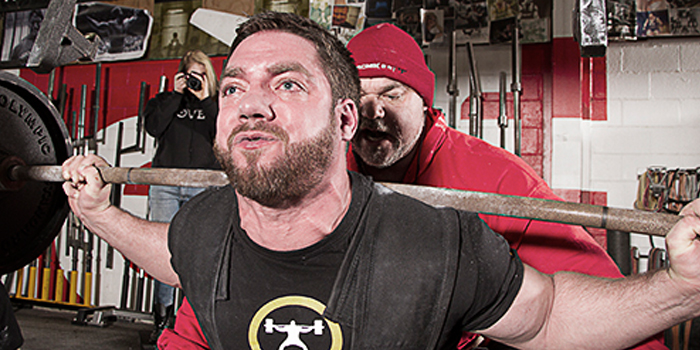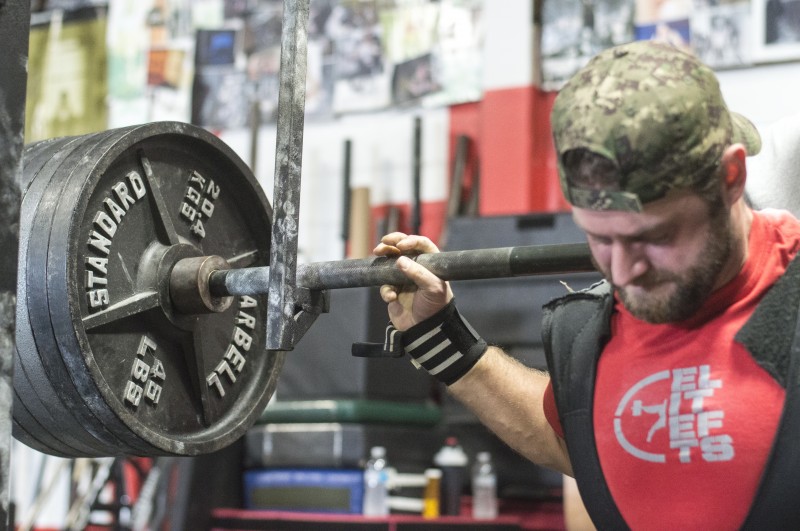
I’m going to paint a quick picture for you. See if it sounds familiar:
It's four weeks out from your powerlifting meet and your program calls to take a heavy single on squat. You feel like you’ve gotten stronger over the course of your training cycle, but you haven’t really pushed a max competition lift yet. Your goal is to hit around what a second attempt will be in your meet, which would be a small PR. You’ve been working hard and really want this meet to go well, and anything less than a PR would be a disappointment. Saturday is the day you are planned to take your heavy squat, but the two days before you were up late studying for a test, or taking care of your kids, or struggling with insomnia (plenty of examples could fill this). You also are fighting off a small cold, and stress from the past week has you feeling run down.
So you go in Saturday to take your heavy single, and your lift that’s 5% lighter than your goal weight is a grinder. You try to snort a bunch of ammonia and get amped up, because you really want to get this second attempt weight. You go for it, try to grind through, but miss the lift. Your whole world just fell apart.
WATCH: Simple and Effective Training for the Recreational Athlete
All this work for nothing? How are you supposed to set a PR at the meet when you can’t even hit it when you’re supposed to in training?
Your next week calls for a slightly lighter lift, but you really feel like you should be able to hit this weight, so you decide to try the squat again. This time you are able to get it, but it’s an absolute grinder. The rest of training before the meet is comprised of hitting your openers, but after the past two weeks of heavy squats, you’re fried and even your openers are now moving slow. Your confidence is shot, you’re drained, and now you’re going into the meet worried about even just hitting your openers.
Does that situation sound familiar? I know I have been in that exact situation many times in the past, and it’s the reason that I never program (for myself or my clients) in a way that puts too much stake into one programmed week of lifting to determine whether you’re prepared for you meet. Strength fluctuates far too much from week-to-week (even day-to-day and hour-to-hour) to try to pick a day in the middle of a training cycle to be the “test” day where you expect to be at your best. In my opinion, that’s what the meet is for, and it’s the reason most powerlifters take a week off and deload before competing.
So the question is, how do we know if we’re getting stronger and are prepared for the meet? The key is to find ways to consistently track strength increases throughout the training cycle, so that the ebb and flow of peak strength doesn’t negatively affect the overall picture of your training. So instead of having one day be the day to see if you’re getting stronger in a 12-week training cycle, we provide opportunities every week to see if you’re getting stronger. This way, even if you have three randomly placed “bad” weeks in a training cycle, you still had nine other weeks that indicated you were getting stronger (so now those few bad weeks are no sweat).
I implement these methods in my own programming as well as my clients, and many of them are a key part of many successful strength programs such as Jim Wendler’s 5/3/1.
Here are three ways to know if you’re getting stronger without taking a max:
Submax Rep PRs
While it is difficult to predict which week you’ll be in peak position for a maximal PR lift (because of stress, its effect on the nervous system, fatigue, etc), often times you can still hit a sub-maximal PR (via increasing number of reps) even when things aren’t perfect. If you bench 300 for 3 reps on Week 1, and then on Week 4 you bench 300 for 4 reps, you’re getting better! Not only that, but you can get into the zone and push through these rep PRs without the toll taken on the body when you attempt a PR one-rep max. This is also the reason I like waving programming intensities; it provides a lot of opportunities for these sub-maximal PRs over the course of a training cycle (as opposed to a straight linear program). Rep PRs can provide you with re-assurance that you’re getting stronger even on weeks you aren’t going “heavy” (and they can keep you motivated as well). Even if everything else in a training session goes down the tubes, if you hit a rep PR it was a good day.
One thing that is important to keep in mind is that you will need to work on lifts over a certain percentage for singles in order to reinforce technique, which is why I think it’s important to include both methods into a program.
Indicator Lift PRs
This is common in conjugate-style programming where some lifters utilize many different lift variations in their training. I personally like including the competition lift in the majority of a meet cycle, but I don’t always work that lift to a heavy max. This is where indicator lifts can play an important role in your training cycle. Finding indicator lifts that allow you to push intensity with less wear-and-tear, less stress on the body, and less negative impact on the rest of your training makes for a great tool.
One caveat with this is that you need to find lifts that truly indicate your strength on your competition lifts, and this often comes with experience. The box squat is a great example of this. Some lifters know that whatever they can box squat is a certain percentage (let’s say 95%, for example) of their regular competition squat. Since the box squat is easier to recover from than the competition squat, they can use this as an indicator lift throughout a training cycle. Some lifters, however, may not find the box squat as an accurate indicator, which is why this takes time to gain experience as a lifter.
Fatigued Singles
This is something I’ve really liked incorporating in my training. By “fatigued singles” I mean that I basically keep track of what I can hit for a heavy single after my work sets. It’s typically not an absolute max (I try to rarely miss lifts in training), but is instead a case of “what can I confidently hit for a heavy single after my work sets are complete?" This is incorporated in 5/3/1 as “Joker Sets” and commonly referred to in conjugate training as “work up sets” after speed work. I don’t do this every week (typically two out of three weeks), but it also allows me some auto-regulation to decide when I want to just hit one light single for technique practice, or when to push for a “PR." If you can slowly increase your training max over the course of a meet cycle, you know you’re getting stronger.
These are just a few ways you can track your progress throughout a training cycle without burning yourself out or taking the mental toll of having too many “test weeks.” There are many different ways to skin a cat, but this is how I’ve seen success with myself and my clients. I encourage you to try incorporating these into your own programming.











